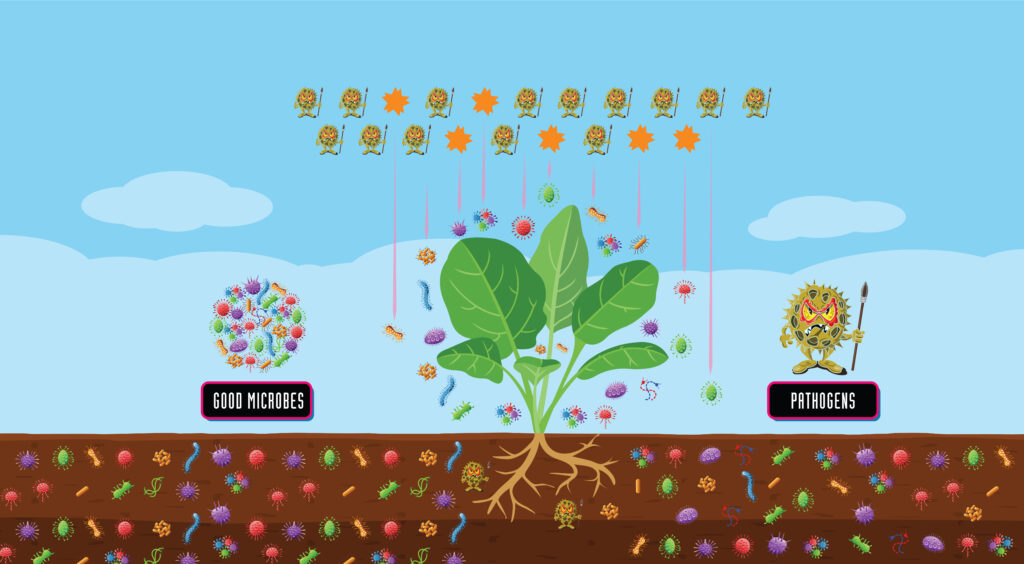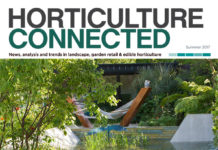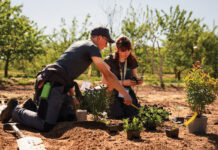An update from Teagasc on the international efforts of the Cost HUPLANT Control network of interdisciplinary scientific experts to tackle food-borne disease.
In recent years there has been an increased emphasis on the prevention of food-borne diseases associated with fresh produce. While food-borne disease was traditionally thought to be primarily associated with animal produce, fresh produce is now known to account for over 1/3 of all foodborne outbreaks in some countries. The increased association of fresh produce with disease outbreaks is due to increased consumption of these commodities, as they are associated with healthier lifestyles and dietary shifts towards consumption of minimally processed and raw, ready-to-eat crops. It is also, in part, due to changes in the processing, agronomy and distribution of fresh produce. Produce eaten in a raw state is inherently of higher microbiological risk to the consumer, as it will not undergo cooking prior to consumption, a step which can attenuate pathogen risk within other food products. The main bacterial pathogens of concern are Salmonella enterica, Shigatoxigenic Escherichia coli (STEC), and Listeria monocytogenes, as they are the predominant cause of bacterial food-borne outbreaks in edible crops. Listeria monocytogenes occurs naturally in the environment, while STEC and Salmonella are zoonotic, with their primary reservoirs within animals, including livestock. Once contamination occurs, efforts to decontaminate via washing or disinfection often prove ineffective, so prevention of contamination of the fresh produce by human pathogens is critically important to protect consumers.
Safeguarding fresh produce from human pathogens is a global concern, from both a human health and consumer confidence perspective. Recently the EU funded a network of interdisciplinary scientific experts (Cost HUPLANT Control) to work together with a wide range of stakeholders towards addressing this issue. As part of the activities of this network an international stakeholder workshop was held in Teagasc (the Irish Agriculture and Food Development Authority), at the Teagasc Food Research Centre in Dublin. The aim of the workshop was to bring together relevant stakeholders, including international researchers, regulators and commercial growers, to examine biological hazards and control strategies in plant production systems in order to ensure the microbiological safety of horticultural products. The workshop also aimed to generate a series of best practice recommendations that could feasibly be implemented by growers, policy makers, advisors and scientists; and to identify barriers to implementation of current best practice. The participants assessed the current European situation in relation to the safety of horticultural produce under the themes of (1) Protecting fresh produce from microbial pathogens, (2) Control strategies and sampling, and (3) Risk assessment and risk based sampling. A specific horticulture industry stakeholder event was held as part of the workshop, where participants were asked to provide their perspectives on what they saw as the biggest issues for growers with respect to potential contamination of produce with human pathogens, and what they perceived as the gaps in knowledge. Participants also discussed which control measures they thought to be technically feasible/acceptable by consumers, policy makers, and companies; and what information would be helpful to them in the continued provision of food safety assurance within their own production systems.
For growers, recommendations include reinforcement through clear communication on the need to prevent initial contamination of produce. This can be achieved through the adoption and incorporation of good agricultural practice and good hygiene into standard operating procedures on farms, and the utilisation of on farm risk assessments. Training of staff was identified as amongst the most critical aspects to ensuring the microbiological safety of the product. The importance that all staff working along the produce production chain have an understanding of biological safety practices and the reasoning behind them needs to be communicated. Growers should also be aware that, in response to social trends, consumers may consume produce in a manner unintended by the grower, which may increase the risk of disease.
Recommendations to regulators and advisors include balancing communication messages to growers, indicating what is required of them, but also equally, clearly explaining why it is necessary. Additionally, it was felt that extra support and materials would be beneficial for growers, particularly to smaller growers, to assist in the training of staff on the importance of biological safety practice, especially in sectors where staff turnover may be high and differences exist in the native languages spoken.
Recommendations to scientists include a greater emphasis on knowledge transfer and to, where possible, focus knowledge transfer efforts into developing clear recommendations that growers can implement. The interaction between the plant microbial community, potential pathogens, environmental conditions and agricultural practices requires a greater level of attention and research to aid in predicting the risk of human pathogen establishment. Teagasc, along with partners in Technological University of Dublin and University College Dublin and industry representatives, are following up on these recommendations, as part of the Department of Agriculture, Food and the Marine funded project HortAssure, which is focused on providing assurance of the microbial and chemical safety of fresh produce.
Overall, it is evident that increased interaction and information exchange between stakeholders will enable better understanding of the issues and opportunities faced by the horticultural sector, and that the co-creation of advice through participation of all stakeholders can assist in reducing the risk of contamination of horticultural produce.

Authors:
Dr. Fiona Brennan Senior Research Officer, Johnstown Castle, Teagasc
Fiona Brennan is a senior research officer in soil microbiology in Teagasc Johnstown Castle. Her research group focuses on the impact of agricultural practice on soil health, microbial-soil-plant interactions and microbial functioning, particularly with respect to the role of microbial communities in soil nutrient cycles, greenhouse gas emissions and plant health.
Dr. Kaye Burgess Senior Research Officer, Food Safety Department, Teagasc
Dr Kaye Burgess is a Senior Research Officer in the Food Safety Department in Teagasc Food Research Centre Ashtown. Kaye is a molecular microbiologist who leads a research programme on the detection and characterisation of foodborne pathogens and antimicrobial resistant microorganisms in the farm to fork chain. She is the coordinator of the DAFM funded project HortAssure, which is focused on assuring the microbial and chemical safety of horticultural produce.
Dr. Gaffney, Michael T. Senior Research Officer, Horticultural Development Department, Teagasc
Dr Michael Gaffney is an entomology and IPM researcher working in the Horticulture Department in Teagasc, having previously worked at the University of Wales, Swansea and UCD. He leads a diverse research group focusing on crop protection and crop quality issues. He can be contacted at michael.gaffney@Teagasc.ie







